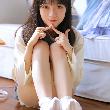
中国雕塑(英文版) CHINESE SCULPTURES 9787508513270 肇文兵|王文亮 五洲传播出版社
当天发货,正版二手书,品相一般都没问题。
¥ 17.8 1.9折 ¥ 96 九品
库存2件
作者肇文兵|王文亮
出版社五洲传播出版社
ISBN9787508513270
出版时间2010-01
装帧平装
开本16开
定价96元
货号1030327590621659148
上书时间2024-10-31
- 在售商品 暂无
- 平均发货时间 9小时
- 好评率 暂无
- 最新上架
商品详情
- 品相描述:九品
- 商品描述
-
商品简介
Chinese sculptural arts have gradually developed their own style over time and managed to display aesthetic features and cultural concepts unique to ancient China. The development of Chinese sculpture parallels the history of the ancient Chinese culture and aesthetics. It is a visible witness to the cultural fusion and exchanges between the Hans and other ethic groups as well as between the Chinese and foreign cultures.
作者简介
Zhao Wenbing, born in 1975 in Changchun,Jilin Province, is doctoral candidate of the Academy of Arts and Design, Tsinghua University tutored by Prof. Zhang Fuye. She graduated from the Central Academy of Artsand Design in 1999 and worked as a teacher in the Art Theory Department of Luxun Academy of Fine Arts in the same year. She obtained the MA from the Academy of Arts and Design,Tsinghua University in 2006. Since July 2006,Zhao has worked as the part-time editor and column director of the magazine Arts and Design. She has many dissertations public she don the core periodicals of arts and design.
目录
Foreword
Beginnings of Chinese Sculpture
Pottery sculptures in primitive times
Jade sculptures in primitive times
Ferocious Beauty of the Central Plains Civilization
Shang——Magnificent ferocity
Western Zhou——Simple dignity
The Spring and Autumn Period and the Warring States
Period——Slim and graceful luxury
The Mysterious Culture of the Ancient Shu
Sanxingdui culture
Standing bronze figure with multiple identities
Suspected alien bronze heads
Large bronze masks with vertical eyes and straight ears
Emperor Qin Shihuangs "Underground Army"
What are tomb figures?
Excavation of Qin terra-cotta warriors and horses
Shape of Qin terra-cotta warriors and horses
Terra-cotta horses and bronze chariots and horses Chinese realism
Magnificent Stone Carvings from the Han Dynasty
Large stone carvings
The tomb of Huo Qubing
Horse Stepping on a Xiongnu Soldier
Making a tomb Qilian Mountain
Artlessness behind handiness
Skillful but not exquisite
Carved stone animals in the Eastern Han Dynasty
Introduction of Buddhism and the Blending of Cultures
Mogao Grotto images
Maijishan Grotto images
Yungang Grotto images
Longmen Grotto images
The Dignity of "the Kingdom of Heaven"
Guard beast figures in the Wei, ]in, Northern and Southern Dynasties
Emperor stone carvings in the Tang Dynasty
Pottery figures in the Tang Dynasty tombs
Integration of Buddhism, Taoism and Confucianism
Painted sculptures at Jinci Temple
Buddhist statue at Qinglian Temple
Dazu rock carvings
"Colorful" sculptures from the Ming and Qing dynasties
Ming-style painted sculptures at Shuanglin Temple
Statues of 500 Arhats at Qiongzhu Temple
Gorgeous Residences
Qin tile carvings and Han eaves-tile ornaments
Relief sculptures on Que from the Eastern Han Dynasty
Ornamental architectural sculptures of the Sui and Tang dynasties
Stone architectural sculptures of the Yuan Dynasty
Architectural sculptures of the Ming and Qing dynasties
Delight of Folk Art
Qiaoer "Muhura"
Playing toys——Big Afu
Hand-made figures based on traditional Chinese operas and Clay Figurine Zhang
Sculptural Style in the New Era
1911-1949: Western style gradually played a role in the
turbulent eastern world
1949-1979: From revolutionary passion to formula-style art
From 1980-the early 21st century: Conceptual sculptural art showing public awareness
Appendix: Chronological Table of the Chinese Dynasties
内容摘要“人文中国书系”共30个分册,书系旨在通过介绍中国传统文化中一些有代表性的领域或专题,展现中国文化的总体面貌。书系的作者均为相关领域的专家学者,他们广博的历史文化知识以及深入浅出的叙述方法,使读者可以通过轻松愉悦的阅读,领略丰富多彩、博大精深的中国文化。该系列丛书设计精美,内容丰富,出版以来受到国外读者欢迎,版权输出到多个国家,并被收入“剑桥文库”。
中国雕塑以它特有的语言,生动而形象地记述着中国历史,是各时代人文精神的升华,社会生活的记录。本书以中国古代雕塑的历史发展为线索,精选不同历史时期的代表作品,向读者展现出中国雕塑的独特魅力。作者不仅局限于作品本身的样式、塑造手法以及风格特征,而且注重将视线集中于风格背后的文化内涵。
As the essence of cultural spirit and the records of social life in different periods, the Chinese sculpture vividly depicts the Chinese history. This book follows the historical development of Chinese sculpture, selects representative works in various historical phases, and presents the unique charm of Chinese sculpture to the readers. This book not only pays attention to the formats, techniques and genres of particular sculpture works, but also emphasizes on the cultural connotation behind the genres.
Chinese sculptural arts have gradually developed their own style over time and managed to display aesthetic features and cultural concepts unique to ancient China. The development of Chinese sculpture parallels the history of the ancient Chinese culture and aesthetics. It is a visible witness to the cultural fusion and exchanges between the Hans and other ethic groups as well as between the Chinese and foreign cultures.
相关推荐
— 没有更多了 —








![21世纪的管理挑战 9787111280590 [美]彼得·德鲁克 机械工业](https://www0.kfzimg.com/sw/kfz-cos/kfzimg/dffdfdff/fad904ac547ea64e_s.jpg)
![别莱利曼的趣味科学(趣味物理一) 9787564070984 [俄]别莱利曼 北京理工大学出版社](https://www0.kfzimg.com/sw/kfz-cos/kfzimg/cadfdfeb/8b48283948e42b61_s.jpg)









以下为对购买帮助不大的评价